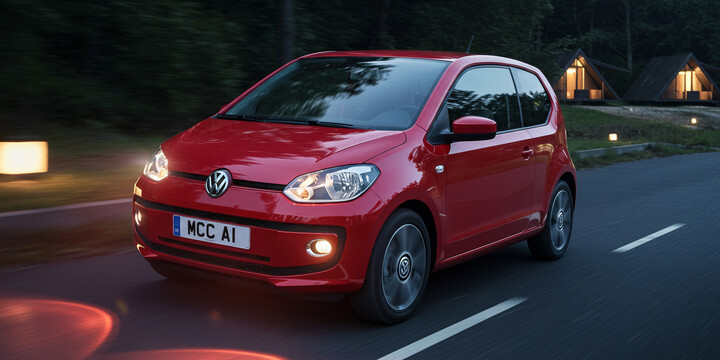
VOLKSWAGEN UP! (2016-19) 3DR HATCHBACK 1.0 SS 75 EU6 UP! BEATS
The VOLKSWAGEN UP! (2016-19) 3DR HATCHBACK 1.0 SS 75 EU6 UP! BEATS is a compact city car that’s perfect for urban driving and everyday commuting. Known for its practical size and efficient performance, this model is a popular choice among first-time drivers, young professionals, or anyone seeking a reliable, easy-to-manoeuvre vehicle suitable for city life. Its distinctive design combines a modern look with clever use of space, making it a stylish yet functional option. The UP! Beats edition stands out with added features and a reputation for good sound quality, making it a fun and versatile choice.
In the UK market, this hatchback is often appreciated for its fuel economy—ideal for reducing running costs—along with its user-friendly driving experience. With an average valuation of around £7,798 and a typical mileage of just over 8,700 miles from previous owners, it offers a low-mileage option for those looking for a nearly new feeling at a more affordable price. Compared to rivals in its class, the Volkswagen UP! is recognized for its build quality, reliability, and standout features like the distinctive Beats audio system. Whether you're after a city runaround or a dependable first car, the VOLKSWAGEN UP! (2016-19) 3DR HATCHBACK 1.0 SS 75 EU6 UP! BEATS delivers style, efficiency, and smart design—all key reasons why it remains a popular choice among used cars in the UK.

average use

The data indicates that for the Volkswagen Up! (2016-19) 3-door hatchback 1.0 SS 75 EU6 UP! BEATS, the majority of vehicles—approximately 66.7%—have recorded mileage between 10,000 and 20,000 miles. Meanwhile, about 33.3% of these vehicles have mileage below 10,000 miles. This distribution suggests that most of these cars are relatively low-mileage, which could be appealing to buyers seeking well-maintained, lightly used vehicles.

vehicle values

The private sale valuation data for the Volkswagen Up! (2016-19) 3-door hatchback 1.0 SS 75 EU6 Up! Beats model indicates that the majority of vehicles (approximately 99.9%) are priced within the £6,000 to £11,000 range, with equally distributed percentages across the three price bands: £6,000–£7,000, £9,000–£10,000, and £10,000–£11,000. Notably, there are no data points representing sales below £6,000 or above £11,000, suggesting that most privately sold vehicles of this model tend to fall within this mid-range spectrum. This distribution highlights a consistent valuation trend for this vehicle segment in the private market.

production years

The data indicates that the majority of the Volkswagen Up! (2016-19) 3-door hatchbacks with the specified trim and engine are manufactured in 2019, accounting for approximately 66.7% of the sample. Vehicles from 2018 make up about 33.3%. This suggests a recent manufacturing trend, with most vehicles being quite new, close to the end of the model's production period. The absence of earlier years may reflect the model's production timeline or the sample's focus on newer vehicles.

colour popularity

The data indicates that the main paint colour for the Volkswagen Up! (2016-19) 3-door hatchback, 1.0 SS 75 EU6 UP! BEATS model, is predominantly white, accounting for 66.7% of the sample. Silver is less common, representing 33.3%. This suggests that white is the most popular or standard colour choice for this vehicle during the specified period.

ownership cycle

The data indicates that for the Volkswagen Up! (2016-19) 3-door hatchback 1.0 SS 75 EU6 UP! Beats model, approximately one-third (33.3%) of the vehicles have only one registered keeper, while around two-thirds (66.7%) have two registered keepers. This suggests that a majority of these vehicles tend to change hands at least once during their lifetime, reflecting typical ownership patterns for this model.

engine choices

The data indicates that all vehicles of the Volkswagen Up! 3-door hatchback (2016-2019) 1.0 SS UP! BEATS model are equipped with a 1.0-liter engine, and they all primarily use petrol as fuel. This suggests a consistent engine size and fuel type across the entire model range during this period, highlighting its reputation as a small, efficient city car with standard petrol fueling.












